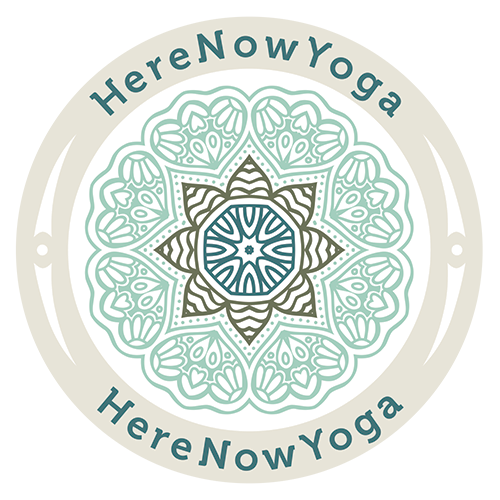The following blog post was contributed by Monica Davis, HereNowYoga 200 hour TT graduate 2017. This research began as “Breath-work and Respiratory Function." As she searched for articles about asthma, COPD, and other common ailments, Monica quickly learned that these were in a long list of diseases, symptoms and disorders that were affected by the breath. Everything from skin issues and broken bones to cancer and Alzheimer's. As she continued reading, she learned that the breath impacts every bodily function, thought process and emotion we have.
There is a phrase used in the south in response to a surprising revelation-- “Well, shut my mouth.” This phrase became applicable both figuratively and literally as I learned that we do not know how to breathe.
Breath is our first gift as we begin our earthly journey. In many cultures, it is believed that the spirit lingers around the newborn and enters the body with the first breath.
The word “breath” is synonymous with the term “ spirit” in many languages. For instance, the Greek word "pneuma," from where we get our word "pneumonia." In the Hawaiian language, the word "ha" means breath, the greeting "Aloha" can be translated as "joyfully sharing life/breath."
Globally, we have become mouth-breathers. There's not a conclusive reason for this, but the evidence of its effect is astonishing. So much so that I literally said, “Well, shut my mouth.” With all of the business (busy-ness) of life, we forget how to breathe properly. This process begins earlier than most of us would imagine. Usually by age five our breathing habits have changed enough to start the negative spiral.
The term pranayama is translated as energy (prana) control (yama). The word is used to describe breathing techniques in yoga. The way we breath determines how we look, act and feel. This in turn determines not only the quality of life but the duration.
We have forgotten how to breathe the way nature intended. All mammals breathe through the nose unless they are under stress. When we are under stress we are instructed to take a deep breath, and immediately we gulp in air. Our lungs have 300 million tiny balloon like structures called alveoli that fill with air on our inhale. There's 100 square feet of lung tissue in your body. That is the equivalent of 2 football fields if the tissue were to be stretched out. Within this tissue are a multitude of sensory receptors that monitor the quantity and the quality of the air we breath. This information is vital to how the body functions. To witness this information exchange in action, simply hold your breath. Don't gulp in just hold as long as you can. Your entire system goes into overdrive. On average we can go 3 weeks without food, 3 days without water, but only 3 minutes without air.
When we think of improving our health we typically begin with the thing we could go the longest without. Health care providers and advertisers promote diet and exercise to change your life, when in reality changing the way you breathe could be more immediately affective. On average, our breath cycles occur 23,000 times a day. As noted in Joe DiSteano's TEDx talk, if we are breathing improperly in comparison to our eating an unhealthy diet, it's like eating McDonald's 23,000 times a day. By the simple act of closing our mouth to breathe, we can improve our entire life.
Our lifestyles do not allow us to turn off and tune out the subtle stressors, the constant-ness of light and sounds that surround us both day and night. Our body is still registering these, even if our conscious mind isn't. We are overloaded with information on a daily basis. If we close our eyes and breathe softly, slowly, deeply through our nose we can increase our ability to focus, decrease our stress hormone production and blood pressure.
A sigh is the body's way of resetting the cosmic rhythm of the breath. Breathing through the nose helps to maintain this rhythm. Breathing through the nose is also the most cleansing way to breathe. The nose has over 30 functions, one of which is the production of nitrous oxide. This chemical is used to sterilize the air as it passes through nasal cavity. The sterilized air is exchanged for the waste and byproducts. These byproducts are used to benefit other living beings in our world, thus making us intimately connected to our world.
So let's take a minute to shut our mouths. Close your eyes, place your left hand just above your naval, your right hand on your mid chest. Close your mouth and breathe so slowly and softly that the hairs of your nostrils do not move. Now in the same manner begin your exhale. The exhale is where the healing part of the breath occurs, it is in this phase that the body is in its most relaxed state.
There are many types of pranayama that result in varied outcomes. The closed mouth breathing is just one example of how to use the breath to calm the body and the mind and to counteract the impact that stress has on our lives. Check out the Ted Talk above to hear a further explanation of the link between breath and health.
Monica Davis graduated from the HereNowYoga 200 hour Teacher Training program in the Fall of 2017. She is currently focusing on different breath styles, restorative, and yin yoga in her personal practice and teaching. She lives on a farm in Lawley, AL with horses, cows, chickens, a goat, dogs, and a cat. The farm is surrounded entirely by woods. She enjoys the solitude that allows her to sit and be for hours, watching the changing seasons in the trees.


